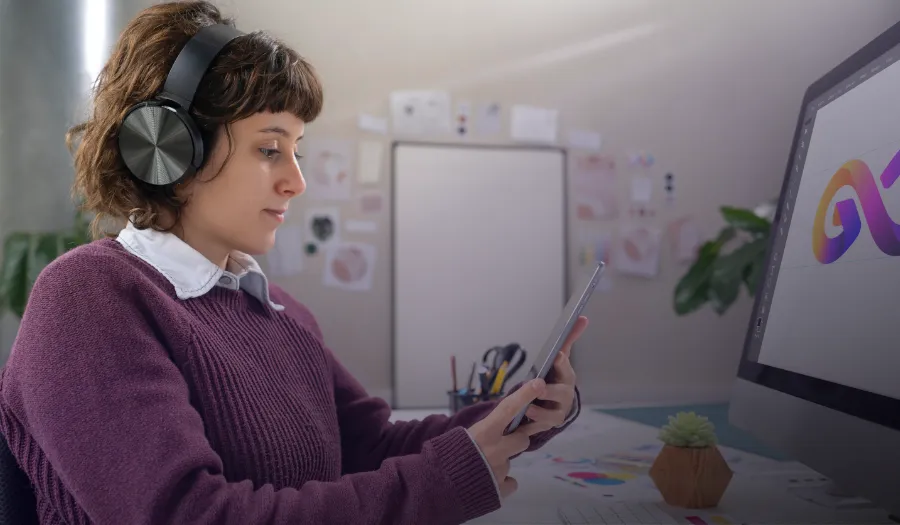Benefits of User Experience in Your Company's Ecommerce
Currently, many people prefer not to leave the comfort of their homes and do their shopping for clothing, shoes, accessories, food, technology, among...
5 min read
Por Silvia Aguilar | Nov 25, 2020
At present, incorporating the UX design to your website is necessary, since this is what generates the interaction with it to be friendly and provides the user with comfort and satisfaction, due to aspects such as its visual appeal, its ease of use, its content, its loading speed among others.
Currently users are less willing to try to understand how a web page works, they seek to be able to fulfill their objective in the easiest and fastest way they can, without having to deal with a complex interface and difficult navigation. The easier it is for a user to find what they are looking for, the more likely they will continue to interact with your site and return at other times.
Therefore, generating a good user experience on your website will help it to be successful and achieve many conversions for your business, on the contrary, if it is not possible to give you this good user experience, it is very likely that they will not return to visit you and lose a customer.
There are many aspects that you should consider in UX design, here are 10 tips that will help you improve the user experience on your website and will make your users stay longer on it.
Gestalt laws explain certain perceptions that the human brain has from various stimuli. Several of these laws can be applied to help UX design, since it can help to see what errors are in the interaction with the interface. Here are some of the most useful Gestalt laws to consider in UX design:
Giving your users quality content and generating value for them is an important element within your website, as it will make them stay on it for a longer time, exploring this content. But it is not only enough to define which is the correct content that you must include, but it must be prioritized, giving the user more immediately that content that is essential, it must also be structured, this in order to ensure that the information has a sense of be within the section in which it is located and the user will go there to find it.
Another important point in the content is to refresh it every month, to continue nurturing our customers and position ourselves in Google. A simple method that can help us to generate this content is blogging. If you want to know more about generating blogs, I recommend you read: “Definitive guide: 10 steps to create a blog that you will love”
In many aspects within your web page, this phrase must be present, both in the design, as in the content and navigation.
In the design it is important not to overload the pages with too many elements and information that will make users not able to digest the site correctly, so leaving blank spaces will help you. Regarding the content, focus on the content that really generates value for your users, do not try to cover too much information, this content must also be prioritized, which leads us to navigation, since the important information for the client should be a few clicks, a navigation with many clicks can confuse the user.
The color within the web page has two main objectives, the first to identify the site with the company's brand image, and the second as an element that helps design and user interaction with the interface.
To achieve the first point, it is important to use the most representative colors of the brand, one in greater quantity and the other colors to complement, but these should be used to a lesser extent so that there is no competition with each other. Now, this does not mean that we will apply the company's color palette to each element on the website, on the contrary, the color should be applied to elements that we want to highlight, a good practice is to apply color to the interaction points within the web page, as it will make them stand out and make it easier for the user to identify it.
Taking care of the hierarchy of your web page will make it easier for users to digest the content within it, also with this you will be able to highlight the information that generates interest to the user and thus continue reading, so give emphasis to information that fits the client and thus have it for much longer on your website.
Give your website a design that builds trust, with elements that allow you to understand where you are in the navigation process and where you should go, with clear CTAs. We human beings like the familiar and the predictable, so give users guides within your website, which allow them to have confidence in the situation and not feel lost.
In addition to the design, you must take into account how to generate customer trust with your brand, some actions you can do to earn that trust is to generate, give value through content, help satisfy a need, use the data of the client, among others, if you want to explore more of the subject I leave you this HubSpot blog: "3 Actions to generate trust and guarantee the exchange with your clients", remember that a good user experience does not only depend on your website, but of all the relationship that the client has with your brand.
Provide the user with easy and fast routes to visit the different pages of your website, so that they can easily access the information they are looking for, take into account that the easier the navigation is and the fewer steps it takes, the more we ensure that the user will not get lost in the navigation flow.
Another important point to consider in the navigation is not only the number of steps, but the grouping that was made of the contents, although in the navigation flow a content is very accessible, if it is badly grouped, it is very likely that the user cannot find it easily.
This is one of the most fundamental points to improve the user experience on your website, since this is where you can test what works and what does not work within it with users, receiving feedback. At this point we can test if all the previous points are really working as we expect and we will be able to give the user a good experience.
Currently it is common for people to access websites from mobile devices, so it is essential to adapt its design to these devices and that it works optimally and provides the same experience.
This is important on websites, since users today are looking for immediacy, so a slow loading time will cause a user to close the page without even using it. That is why it is important to optimize your website and not load it with heavy content.
Make sure that your website provides a satisfactory user experience, because this will increase the conversions for your business, since it will allow you to have happy customers who will stay longer on your website and also will return to visit you. What will benefit your positioning in the search engines and therefore to have a better digital strategy.
I hope these tips help you to give your customer a better experience and improve your relationship with your brand.


Currently, many people prefer not to leave the comfort of their homes and do their shopping for clothing, shoes, accessories, food, technology, among...

In the current digital world, user experience (UX) design plays a fundamental role in creating successful websites. By focusing on the needs and...

What can happen if a user enters a website that looks like it was developed in 2000? Chances are that they will quickly leave it and look for...